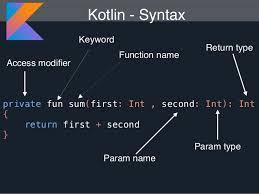

Here we discuss the introduction, syntax, and working of when statement in Kotlin along with the examples and outputs. It supports all types of user browsers, so it’s compatible when keyword satisfied with some range intervals, which depends upon the requirement. The when keyword supports non -conditional expressions also instead of the switch case statement, these statements will execute the user inputs on each step. The kotlin language used many features as similar to java like collection, util package and even other packages classes and its method behaviours are the same as java. In the conclusion part, kotlin when is one of the conditional statements like if, else, etc. We used the when keyword to print the enum class value on the function. In the final example, we used to calculate the current month status by using the boolean condition. When that function ends, we’ll know a bunch of keys and how many steps it took to get to them.Web development, programming languages, Software testing & others fun main(args: Array)")



Otherwise, we can add the point we’re looking at now to the queue. Otherwise, if we are standing on a key and don’t already have it, collect it by adding a record into keyDistance. Next, if we’re standing at a door and we do not have the key, we’re done. Record its distance as one plus the distance it took to get to the spot that we came from. Otherwise, we need to do some work.Ĭongratulations, the neighboring spot we are looking at is something we can move to, and something we haven’t seen yet. We’ll filter out spots that aren’t open (walls), and spots that we’ve already examined (because we’re caching things in the distance map). So long as our work queue isn’t empty, we’ll get all the neighbors of the spot at the head of the queue. We also keep a distance map for any given point from the starting point, and map of keys to their location and how many steps they took to get there. We set up a queue to order our work in increasingly deep steps. val map1 mapOf ('first' to 1) val map2 mapOf ('second' to 2) val map3 mapOf ( map1.pairs, 'third' to 3, map2.pairs, ) Share Improve this answer Follow answered at 14:06 Pavel Shorokhov 4,285 1 34 40 1 What what what This looks amazing. This function should look familiar - we’ve use a Depth First Traversal a few times this year. And then you can easy combine immutable maps using default Kotlin syntax.


 0 kommentar(er)
0 kommentar(er)
